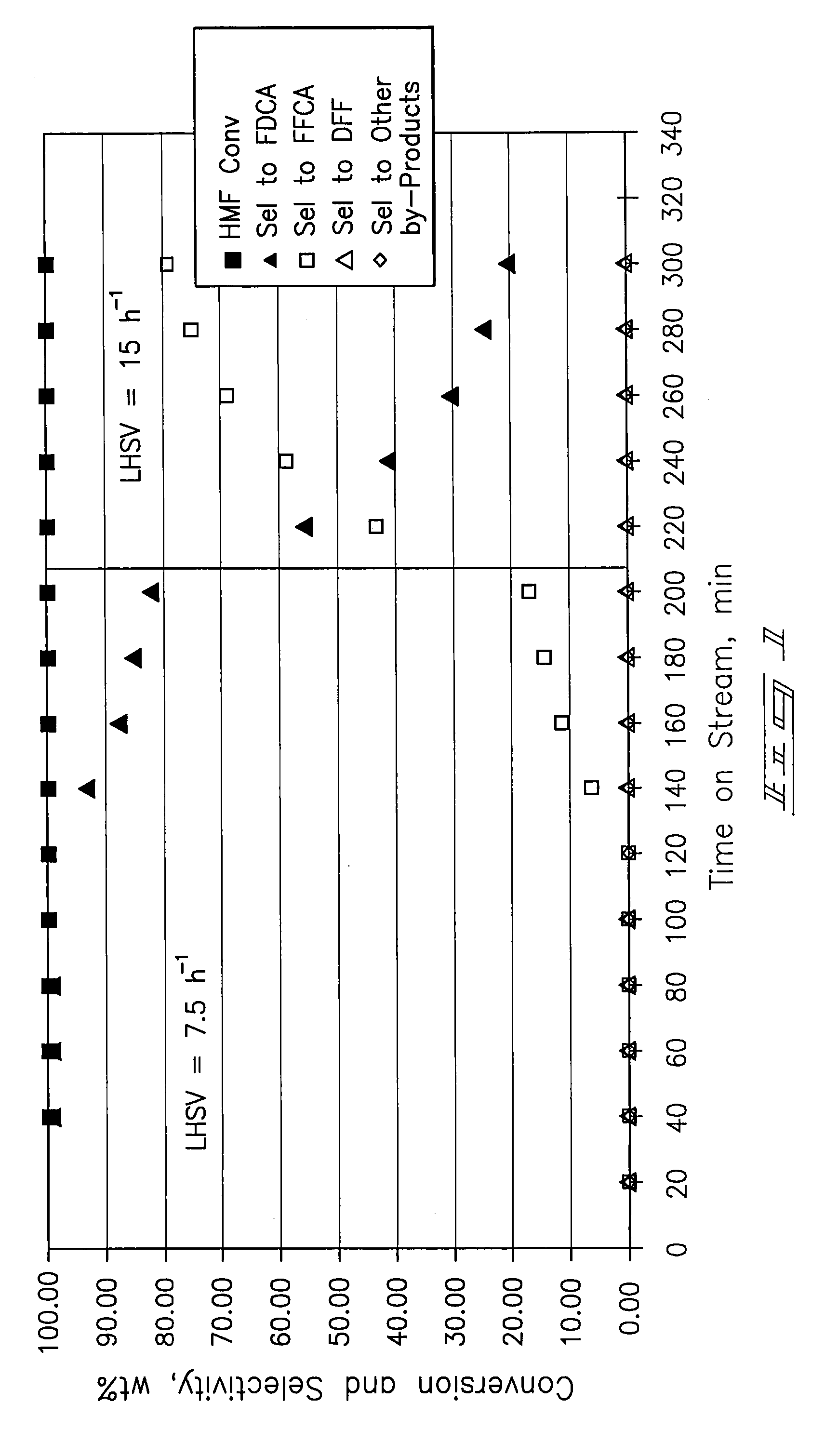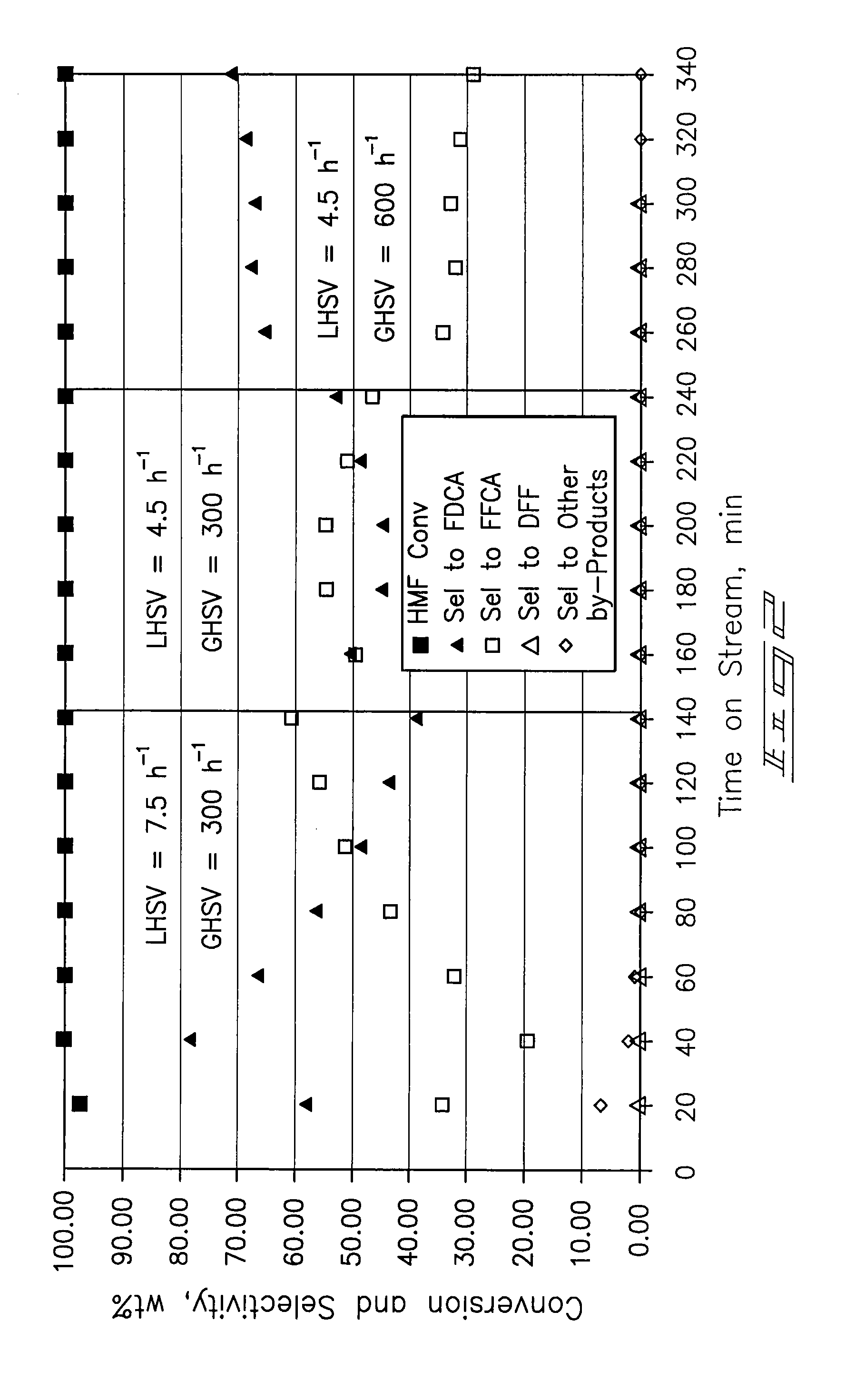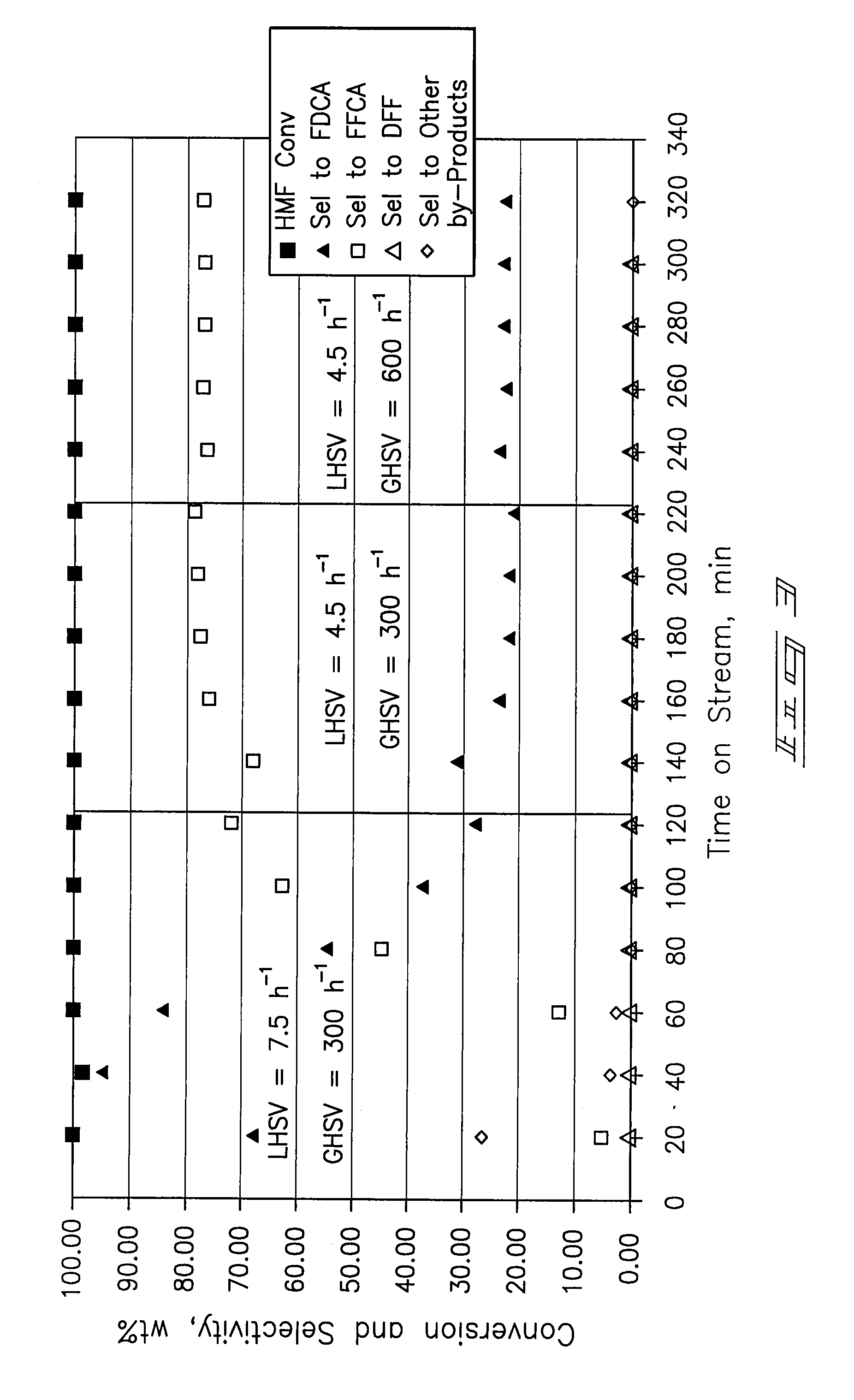Hydroxymethyl Furfural Oxidation Methods
a technology of hydroxymethyl furfural and oxidation method, which is applied in the direction of metal/metal-oxide/metal-hydroxide catalyst, physical/chemical process catalyst, organic chemistry, etc., can solve the problems of low hmf conversion, low product selectivity, and/or low product yield
- Summary
- Abstract
- Description
- Claims
- Application Information
AI Technical Summary
Problems solved by technology
Method used
Image
Examples
example 1
Oxidation of HMF to FDCA in a Fixed-Bed Continuous Flow Reactor
[0067] A ⅜-inch stainless-steel thick-walled tube (0.065 inch wall thickness) was utilized as a tubular reactor. 4 mL (4.7254 g) of dry 5% Pt / ZrO2 catalyst was placed in the reaction tube with 60-80 mesh glass beads at the inlet and outlet of the catalyst bed. The reactor tube was attached to a liquid-gas feed system and placed within a tube furnace. The catalyst was wetted with deionized water and reduced prior to testing at 150 psi pressure and ambient temperature with a hydrogen flow. After 30 minutes the hydrogen was shut off and the system was vented and purged with nitrogen.
[0068] Airflow of approximately 100 mL / min was established until the system pressure increased to 150 psig. Water was introduced at a flow rate of 0.5 mL / min with a high-pressure liquid pump and the airflow was then decreased to a flow rate of 20 mL / min (GHSV=300 h−1). The temperature operating set point of the system was increased to 100° C. ...
example 2
Oxidation of HMF in a Batch Reactor
[0069] Batch oxidation of HMF was conducted in a 40 mL autoclave with a glass liner. 0.50 grams of 5% Pt on ZrO2, 10 mL of deionized water and a magnetic stir bar were added into the glass liner. The vial and contents were sealed in the autoclave and were purged with nitrogen. The contents were then activated by reducing with hydrogen at room temperature. After 10 minutes the hydrogen was purged from the reactor with nitrogen. The nitrogen line was subsequently removed and no attempt was made to exclude air.
[0070] An oxygen line was attached to the reactor and the reactor was filled with oxygen. 0.51 grams of HMF in 5 mL of water was added to the autoclave with a syringe through a valve placed at the top of the autoclave cap. A magnetic stir plate was turned on and the reactor was pressurized to 150 psi with oxygen. The autoclave was heated to 100° C. After 6 hours reaction time a sample was removed from the reactor by cooling to 40° C., venting ...
example 3
Preparation of Dff from HMF
[0071] 1.155 grams of HMF was dissolved in 50 mL of methylene chloride. 7.0606 grams of activated MnO2 was added to the solution and the mixture was heated to reflux for 8 hours. The MnO2 was removed from the reaction mixture by filtration and the solids were washed with additional solvent. The solvent was removed to produce and off-white solid. Liquid chromatography analysis of the solid indicated 80% DFF and 20% un-reacted HMF. A trace amount of FDCA was observed utilizing UV detection. The solid was dissolved in hot water and was subsequently cooled to precipitate DFF having a 98.5% purity. Selectivity of the oxidation reaction to DFF was substantially 100%.
PUM
| Property | Measurement | Unit |
|---|---|---|
| temperature | aaaaa | aaaaa |
| temperature | aaaaa | aaaaa |
| temperature | aaaaa | aaaaa |
Abstract
Description
Claims
Application Information
 Login to View More
Login to View More - R&D
- Intellectual Property
- Life Sciences
- Materials
- Tech Scout
- Unparalleled Data Quality
- Higher Quality Content
- 60% Fewer Hallucinations
Browse by: Latest US Patents, China's latest patents, Technical Efficacy Thesaurus, Application Domain, Technology Topic, Popular Technical Reports.
© 2025 PatSnap. All rights reserved.Legal|Privacy policy|Modern Slavery Act Transparency Statement|Sitemap|About US| Contact US: help@patsnap.com



